10+ SAMPLE Business Purpose Statement
-
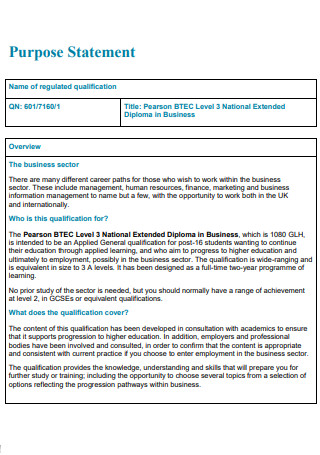
Business Purpose Statement
download now -
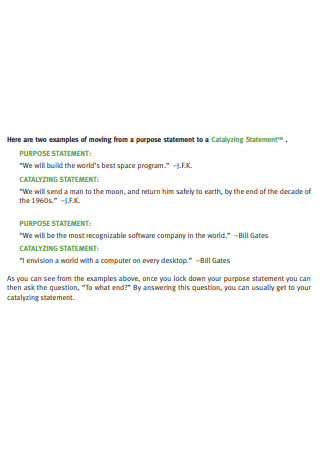
Printable Business Purpose Statement
download now -
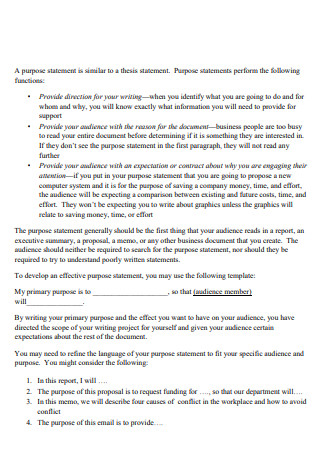
Business Purpose Statement Format
download now -
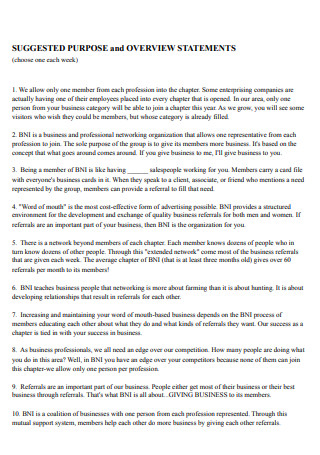
Business Purpose and Overview Statement
download now -
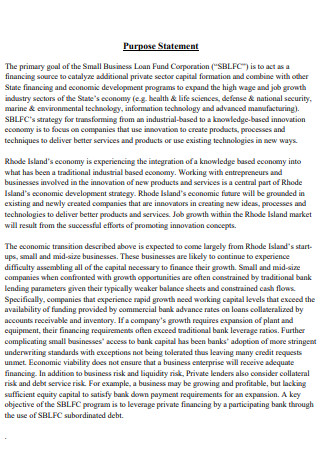
Small Business Purpose Statement
download now -

Business Purpose Statement Agreement
download now -
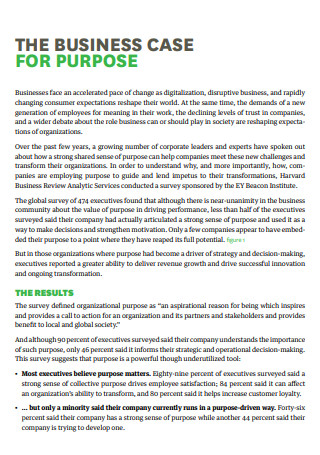
Editable Business Purpose Statement
download now -
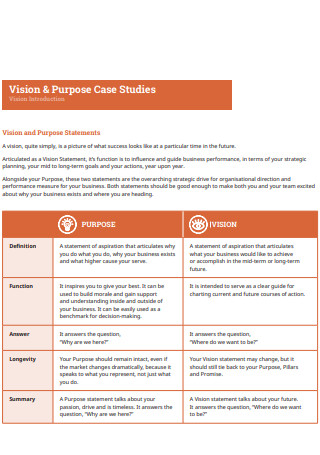
Business Purpose and Vision Statement
download now -
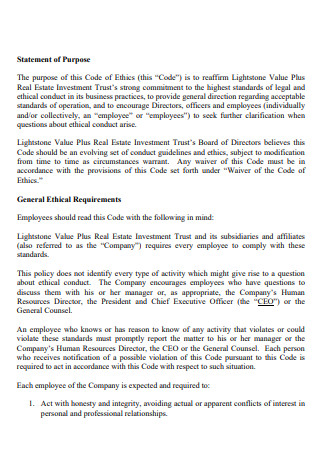
Real Estate Business Purpose Statement
download now -
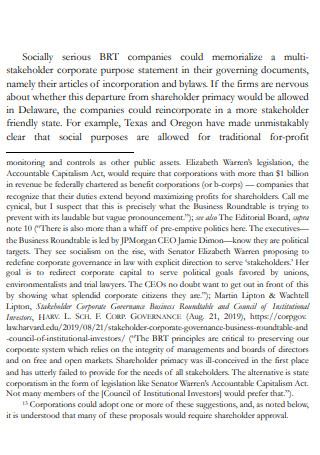
Business Company Purpose Statement
download now -
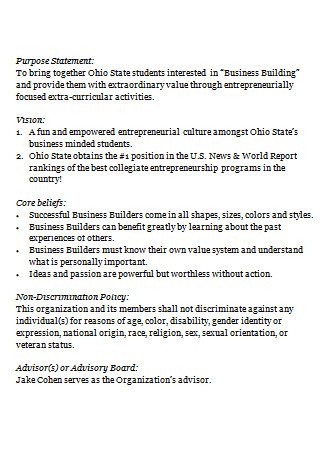
Standard Business Purpose Statement
download now
FREE Business Purpose Statement s to Download
10+ SAMPLE Business Purpose Statement
What Is a Business Purpose Statement?
Components That Make an Effective Purpose Statement
Different Types of Businesses
Steps in Creating a Business Purpose Statement
FAQs
What does a business purpose statement do?
Can a business purpose statement help achieve company goals?
How does a business purpose statement help in employee loyalty?
What Is a Business Purpose Statement?
What is a business purpose statement? The simple answer is that it usually is a one or two-liner statement that states the reason why the company is formed. This statement is usually written in general terms but can also be industry-specific as well. It is not to be confused with a mission/vision statement, since a mission statement is what develops the brand and identity of the business while a vision statement emphasizes the future of the business and motivates the employees in achieving their goals.
The more detailed definition would be that a business purpose statement is a business document that contains the formal declaration of a company’s goals in one or two sentences. It explains why a company exists and what products or services it provides. A business statement of purpose is comprehensive and includes information about how the company meets the demands of its customers. Also, it focuses on the behavior of the company instead of what they think.
Components That Make an Effective Purpose Statement
Having a clear and identifiable business purpose statement is very critical for any business nowadays especially if they’re looking to add more people to their roster to help them grow as a brand and outperform their competitors. With that being said, here are some key components that make the purpose statement of a company very effective:
Different Types of Businesses
There are different types of businesses that exist, and each entrepreneur who may just be starting up should properly choose the business structure that fits best with their enterprise. Without further ado, here are the types of businesses listed below with their definitions:
Steps in Creating a Business Purpose Statement
Creating a business purpose statement portrays what the business intends to portray. With that being said, listed below are the essential steps in creating an effective business purpose statement:
-
1. Perform Research
The first thing to do when creating a business purpose statement is to perform thorough research on the relevant markets. You must do market research to understand current market demands in order to tailor your company statement to the appropriate audience. In performing your research, consider how your company addresses current problems or delivers products or services that meet the needs of customers. Finding out what your rivals are doing and seeing whether there are any problems that have not yet been solved by a product or service are two ways to investigate the present market.
-
2. Understand the Needs of Your Customers
After performing the necessary research in the present market, this step will then follow. Knowing your clients and their demands is vital for writing a solid business purpose statement because it clarifies your relationship with them and what you provide for them. The company statement of purpose is all about serving and meeting the demands of your consumers. One of the easiest approaches to find out what your customers want is to by conducting surveys or polls to allow the opportunity to investigate your whole client base based on the results of the said survey or poll.
-
3. Establish Your Goals
After identifying and understanding what the customer really needs, this step will then follow. Keep in mind that you need to use clear and precise short-term and long-term goals to direct you when generating your business purpose statement. Measuring achievements, such as mentioning specific quantities and due dates, is an excellent method to establish your short-term and long-term goals. It should also be noted that a good short-term or long-term aim addresses the direction of your company, its employees, and its consumers. The design of your business mission statement is directly inspired by your short-term and long-term goals.
-
4. Identify the Mission and Vision
After establishing the goals of your company to be written in the business purpose statement, this step will follow. In this step, what you need to do is to establish your company’s values and mission to better comprehend its purpose. Since vision and mission statements are statements that focus on your company’s guiding principles and general view for the future, you need to consider these statements to help you scale back your business purpose statement to something more feasible and practical. You may also discuss with other members to determine your company’s ideals. The gist of this step is to consider why you started your business and what you aim to achieve.
-
5. Gather Feedback
This step is extremely helpful to creating the business purpose statement since it adds a new viewpoint and identifies opportunities to improve your messaging. When you enable workers and customers to express their true sentiments, they will give valuable feedback. A customer provides a unique perspective since they are better aware of why a consumer chooses your items and/or services and also what they value. Additionally, customer feedback can also be used as a testimonial or review.
-
6. Write the Statement
After gathering feedback from customers, this will serve as the last step in creating a business purpose statement. This step may be the last one but it is still essential because even if the company objective statement is only a phrase or two long, it must be well-formatted. Proper formatting entails ensuring that your business purpose statement’s structure is easily readable. Also, check that your message is consistent across all platforms and that there are no disparities among your statement on your website and in papers.
FAQs
What does a business purpose statement do?
A business purpose statement establishes expectations for the company’s leadership and staff, as well as its consumers and investors. It serves as your company’s future blueprint, guiding all the decisions that are being made, from how you produce your goods to the language you use in your marketing. Furthermore, the business purpose statement impacts your consumer.
Can a business purpose statement help achieve company goals?
Yes. Once there is a clear business purpose statement that drives the company, a company is better equipped to fulfill its goals. All workers, from new recruits to executives, understand the company’s direction and the importance of their contributions. When everyone is working toward the same objective, it is possible to have a properly running business with goals at the forefront.
How does a business purpose statement help in employee loyalty?
Employees love working for a firm that treats them as though they are important members of the team. Communicating a strong business purpose statement boosts this experience since employees feel like they are part of a team that works toward the shared objective of the organization. A business purpose statement, like a value statement, allows workers to function within the underlying ideals that comprise the business while still feeling proud of the work they’re performing.
As stated earlier, creating an effective business purpose statement helps convey the message of the business in one or two sentences. Additionally, when this statement is shared everywhere, such as on social media, more and more people will know about your business. Also, having this type of statement helps the clients know the reason why you are providing certain products or services. In this article, different examples of such statements exist to aid you in creating one for your own company.
